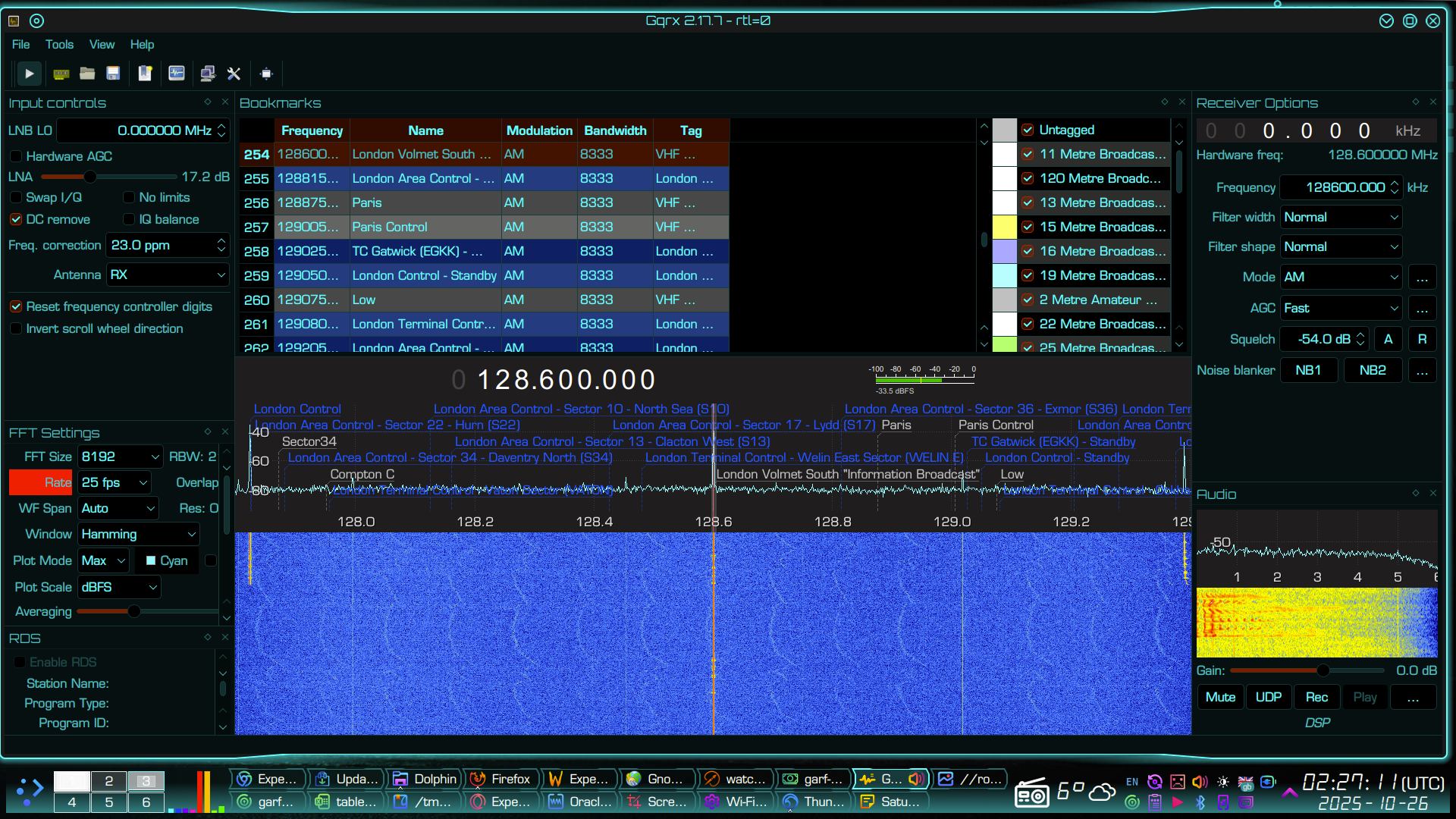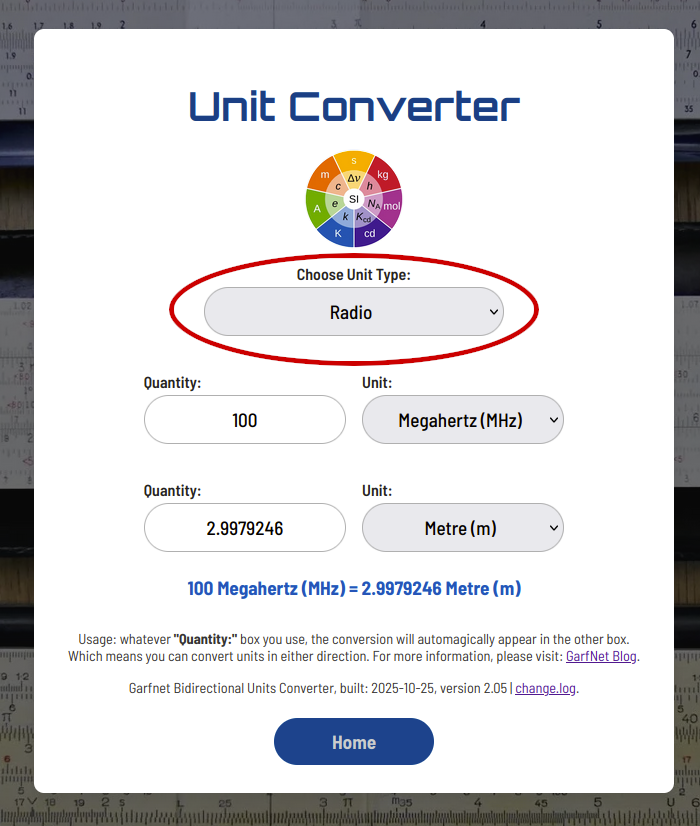Using my redundant TV aerial for DAB and FM radio
I don’t have a TV licence – I don’t intend to buy one either. We have a nice big roof mounted TV aerial which I have repurposed for much better things. For a start, it receives FM and DAB radio perfectly adequately. We’re only a 20 km crow’s flight from the hefty Rowridge VHF transmitter. So we receive a lovely strong signal, despite the aerial not being the correct dipole length for the signals we are receiving.
TV aerial is also great for listening to the aeroplanes too, if you like that sort of thing. We get ATC for almost the entire south, plus London South and London Main Volmets come in strong 24/7. Not to mention a passable signal for world radio stuff on HF. Then there’s the VHF amateur bands, ship to shore, all sorts…
I have a little £20 SDR dongle thing that hangs off a USB port on my laptop. That feeds a chunk of RF bandwidth to GQRX for processing. This is an excellent open source communications receiver application based on GNURadio and QT, that comes free with Debian. Covers everything from about 150kHz up to 1100MHz – all bands, all modes. Much better use for the TV aerial than watching the boring old telly, IMHO… ![]()
Surely a UHF aerial must be pretty poor for VHF reception?
Well, yes and no. UHF TV aerial is obviously suboptimal for receiving much longer wavelength signals such as VHF/FM radio. Ideally the dipole length of an aerial wants to be ¼ the wavelength of the radio signal. The average dipole length for a UHF TV aerial is just 15 cm.
In the case of an FM radio signal of around 100MHz, its wavelength is roughly 3 metres. Which means the dipole should be around 75cm. TV aerial dipole is typically around 15cm. DAB is broadcast around 200MHz, which has a corresponding wavelength of about 1.5 metres – and an optimum dipole length or around 38cm – still more than twice as long as that of a TV aerial.
So why does the TV aerial still work for FM radio?
Perhaps it’s getting signal from the coax cable set into the wall? Nope! It has nothing to do with the cable in the wall. In fact, that cable is screened precisely to avoid extraneous signals. Several factors at play…
- Modern receivers (and some older ones too) have very sensitive front-ends. Often they are designed to use a telescopic whip aerial – which are often of suboptimal length.
- TV aerial is up high. in our case around 7 metres. thus there is virtually nothing in the way between the aerial and the transmitters. In the case of aircraft reception, these things are almost overhead – albeit 8 km up and up to 50 km away. Important thing is there are no obstructions.
- In my case, we are 20km from a very powerful VHF/FM radio transmitter. Most my radios will get a signal here with a few centimetres of solder dangling from the aerial socket!
So what we end up with as a good enough signal for most practical purposes. In fact, ironically I’m told that one of the problems faced by aerial riggers today installing FM aerials is the signal is too strong. Consequently, they need to install attenuators to avoid overloading the receivers’ front ends. In any event, I expect that one day I will get round to installing better aerials. But we’ve been in this place for 13 years, so I doubt any changes will happen soon.
Rolling your own
If you are interested in aerials, then you might find this gismo helpful. It has a “Unit Type” called “Radio” that relates radio frequency to wavelength. Your optimal dipole length is ¼ the wavelength of the signal you wish to receive…


